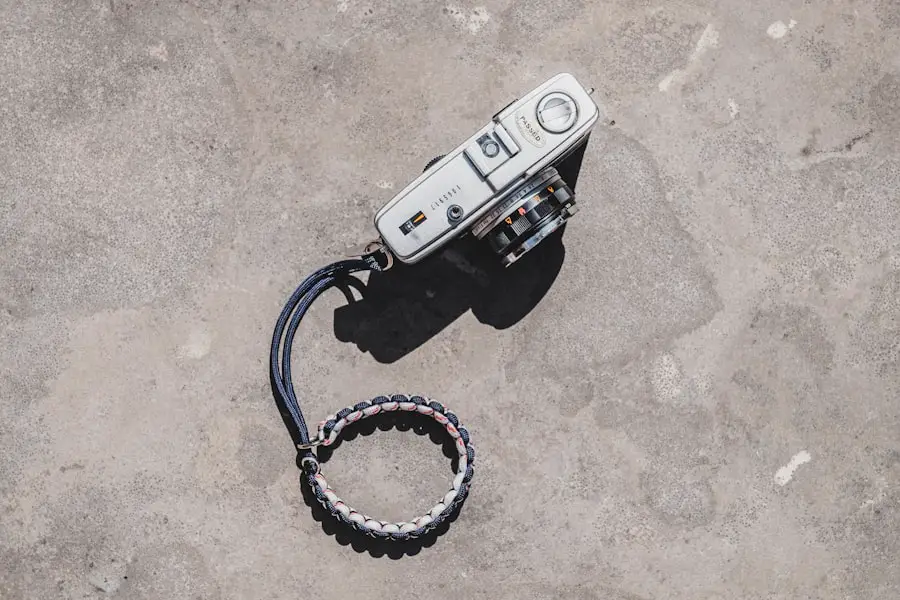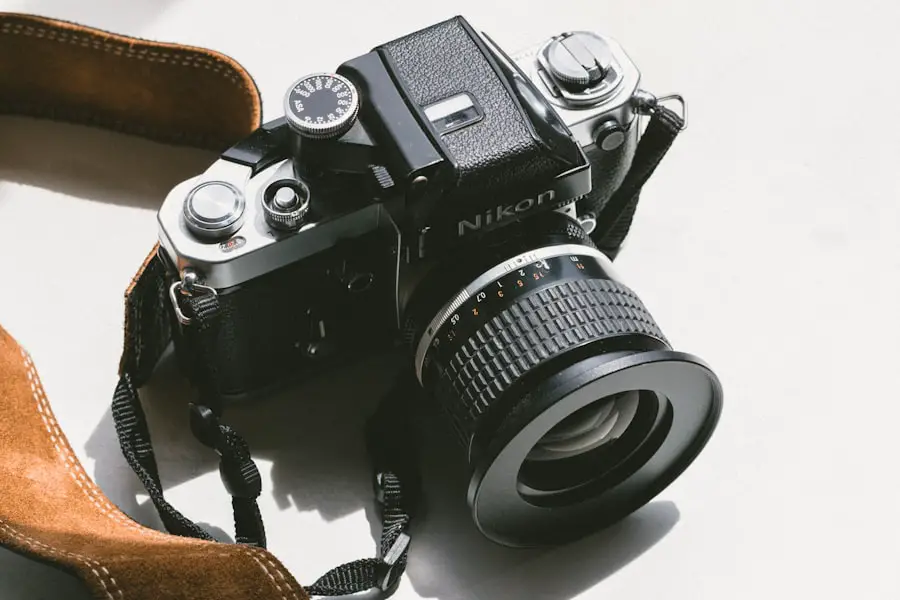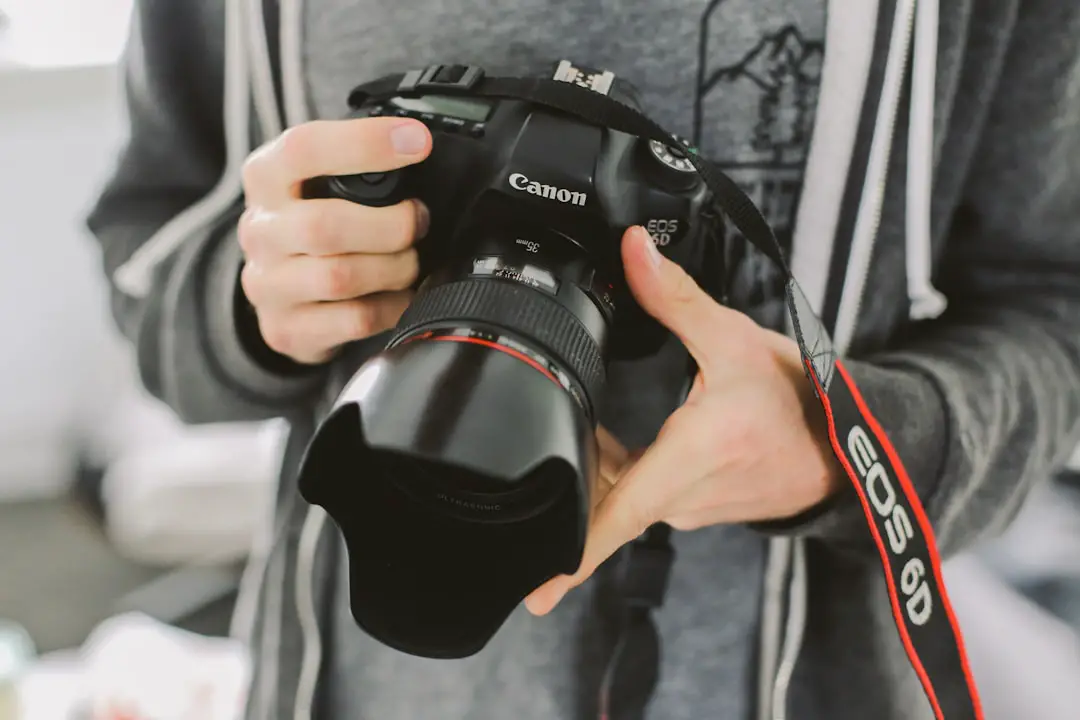Selecting the appropriate camera bag is a fundamental step for any photographer, whether a novice or a seasoned professional. The right bag not only protects your gear but also enhances your shooting experience by providing easy access to your equipment. When choosing a camera bag, consider the type of photography you engage in.
For instance, landscape photographers may prefer a backpack-style bag that allows for hands-free movement and ample storage for additional lenses and accessories. On the other hand, street photographers might opt for a messenger bag that offers quick access to their camera while blending seamlessly into urban environments. Additionally, the size and organization of the bag are crucial factors.
A well-designed camera bag should have customizable compartments to accommodate various lenses, flashes, and other accessories. Look for bags with padded dividers that can be adjusted to fit your specific gear. Furthermore, consider the material and build quality of the bag.
Waterproof or water-resistant materials can provide an extra layer of protection against unexpected weather changes, ensuring that your equipment remains safe and dry during shoots.
Key Takeaways
- Choose a camera bag that fits your gear and provides adequate protection
- Use a comfortable and adjustable camera strap to reduce strain on your neck and shoulders
- Consider a camera clip or holster for quick and easy access to your camera
- Protect your camera from the elements with a rain cover or weatherproof bag
- Be mindful of weight distribution to avoid strain and discomfort while carrying your gear
Use a Comfortable Camera Strap
A comfortable camera strap is an often-overlooked accessory that can significantly enhance your photography experience. Many photographers underestimate the importance of a good strap until they find themselves in a situation where they are carrying their camera for extended periods. A well-padded strap can distribute the weight of the camera more evenly across your shoulder or neck, reducing fatigue and discomfort.
Look for straps made from breathable materials that wick away moisture, especially if you plan to shoot in warm or humid conditions. Moreover, consider the style of strap that best suits your shooting style. Some photographers prefer traditional neck straps, while others may find shoulder or wrist straps more comfortable.
There are also specialized straps designed for specific types of cameras, such as those with quick-release mechanisms that allow for rapid adjustments. Investing in a high-quality strap can make a significant difference in your overall shooting experience, allowing you to focus on capturing stunning images rather than dealing with discomfort.
Consider a Camera Clip or Holster

For photographers who prioritize mobility and quick access to their gear, a camera clip or holster can be an invaluable addition to their setup. These devices allow you to securely attach your camera to your belt or backpack strap, keeping it readily accessible while freeing up your hands for other tasks. This is particularly beneficial for those who engage in active photography, such as hiking or traveling, where quick access to the camera is essential for capturing spontaneous moments.
When selecting a camera clip or holster, ensure that it is compatible with your camera’s weight and size. Many clips come with adjustable mechanisms that can accommodate various camera models and configurations. Additionally, look for options that offer secure locking mechanisms to prevent accidental drops while still allowing for swift removal when you need to take a shot.
The convenience of having your camera at your fingertips can enhance your ability to capture fleeting moments without fumbling through a bag.
Protect Your Camera from the Elements
| Element | Protection Method |
|---|---|
| Water | Waterproof camera case or rain cover |
| Dust | Camera sleeve or dust cover |
| Extreme Temperatures | Insulated camera bag or protective wrap |
| Wind | Windshield or windproof cover |
Weather conditions can be unpredictable, and protecting your camera from rain, snow, dust, and extreme temperatures is crucial for maintaining its functionality and longevity. Many modern cameras come with weather-sealed bodies that offer some level of protection against moisture and dust; however, this does not eliminate the need for additional precautions. Using a rain cover or weatherproof case can provide an extra layer of defense during inclement weather, ensuring that your gear remains dry and operational.
In addition to using protective covers, consider the environment in which you are shooting. If you are photographing in sandy or dusty conditions, using lens filters can help protect the glass from scratches and debris. Furthermore, be mindful of temperature extremes; sudden changes in temperature can cause condensation inside your camera body.
To mitigate this risk, allow your camera to acclimate gradually when moving between different environments, such as from a cold outdoor setting to a warm indoor space.
Be Mindful of Weight Distribution
Weight distribution is an often-overlooked aspect of carrying camera gear that can significantly impact your comfort and shooting efficiency. When packing your camera bag, consider how the weight is distributed across the bag’s compartments. Heavier items should be placed closer to your back to maintain balance and prevent strain on your shoulders and back.
This is particularly important if you plan to carry your bag for extended periods or over uneven terrain. Additionally, if you are using a tripod or other accessories, ensure that they are securely attached and do not throw off the balance of your setup. A well-balanced load will allow you to move more freely and reduce fatigue during long shoots.
Experimenting with different packing arrangements can help you find the most comfortable configuration for your specific gear and shooting style.
Keep Your Camera Accessible

Accessibility is key when it comes to photography; the best shots often happen in an instant. Keeping your camera easily accessible allows you to respond quickly to spontaneous moments without fumbling through your bag. Consider using bags with side openings or front compartments that allow you to reach your camera without having to remove the entire bag from your shoulder.
This design feature is particularly useful in dynamic environments where every second counts. Another option is to use a dedicated camera pouch that can be attached to your belt or backpack strap. These pouches provide quick access while keeping your camera secure and protected from bumps and scrapes.
Additionally, familiarize yourself with the layout of your bag so you can quickly locate lenses and accessories when needed. The more organized and accessible your gear is, the more likely you are to capture those fleeting moments that make photography so rewarding.
Use a Tripod for Stability
A tripod is an essential tool for photographers seeking stability and precision in their shots. Whether you’re capturing long exposures in low light or shooting landscapes with intricate details, a sturdy tripod can make all the difference in achieving sharp images. When selecting a tripod, consider factors such as height, weight, and material.
Carbon fiber tripods are lightweight yet sturdy, making them ideal for travel photographers who need to balance portability with stability. In addition to choosing the right tripod, understanding how to use it effectively is crucial. Ensure that all legs are fully extended and locked before taking a shot, and consider using a remote shutter release or timer to minimize vibrations caused by pressing the shutter button.
For landscape photography, using a tripod allows you to compose your shot carefully and experiment with different angles without worrying about holding the camera steady.
Secure Your Camera During Challenging Terrain
When navigating challenging terrain—be it rocky trails, sandy beaches, or muddy paths—securing your camera becomes paramount to prevent accidents and damage. One effective method is to use a camera harness system that distributes the weight across your body while keeping the camera close at hand. This setup allows you to move freely while ensuring that your gear remains secure even during vigorous activity.
Additionally, consider using protective cases or padded sleeves when traversing rough environments. These accessories provide an extra layer of cushioning against impacts and abrasions that may occur while hiking or climbing. If you’re shooting in particularly rugged conditions, such as during an adventure race or extreme sports event, investing in specialized gear designed for durability can help safeguard your equipment against potential hazards.
Keep Your Camera Clean and Dry
Maintaining cleanliness is essential for preserving the functionality and longevity of your camera equipment. Dust, dirt, and moisture can accumulate on lenses and sensors over time, leading to degraded image quality and potential damage. Regularly inspect your gear for any signs of dirt or debris and use appropriate cleaning tools such as microfiber cloths and lens brushes to gently remove particles without scratching surfaces.
In addition to routine cleaning, be mindful of how you store your equipment when not in use. Keeping your camera in a dry environment helps prevent moisture buildup that could lead to mold growth on lenses or inside the camera body. Consider using silica gel packets in your camera bag to absorb excess moisture and maintain optimal conditions for your gear.
Practice Safe Handling and Storage
Safe handling practices are crucial for preventing accidents that could damage your camera equipment. Always use both hands when lifting or adjusting your camera to maintain control and stability. When changing lenses, do so in a clean environment where dust particles are minimized; avoid changing lenses in windy conditions or near sandy areas where debris could enter the camera body.
Proper storage is equally important when it comes to protecting your gear from potential hazards. Store your camera in its designated bag or case when not in use, ensuring that it is secure and protected from impacts. Avoid leaving your equipment exposed in direct sunlight or extreme temperatures for extended periods, as this can lead to overheating or damage to sensitive components.
Invest in a Waterproof Camera Case
For photographers who frequently shoot in wet environments—such as during rainstorms, at the beach, or underwater—investing in a waterproof camera case is essential for protecting their gear from water damage. These cases come in various styles and sizes, designed specifically for different types of cameras ranging from DSLRs to compact point-and-shoot models. A high-quality waterproof case will not only keep water out but also provide additional protection against dust and impacts.
When selecting a waterproof case, ensure it meets the necessary depth rating if you plan on underwater photography. Many cases also come with features such as built-in lens ports for underwater shooting or adjustable straps for easy carrying during outdoor adventures. By investing in a reliable waterproof case, photographers can confidently explore diverse environments without worrying about damaging their valuable equipment due to exposure to water or moisture.
When hiking, it’s important to have the right gear to capture all the beautiful moments along the way. One essential item is a camera, but knowing how to carry it comfortably and securely can make a big difference. For tips on how to carry a camera while hiking, check out this helpful article on taketravelinfo.com. This article provides valuable advice on the best camera straps, bags, and harnesses to ensure your camera stays safe and easily accessible during your outdoor adventures.
FAQs
What are the different ways to carry a camera while hiking?
There are several ways to carry a camera while hiking, including using a camera strap, a camera clip, a camera bag, or a camera backpack.
What is a camera strap and how is it used for hiking?
A camera strap is a simple and convenient way to carry a camera while hiking. It is worn around the neck or across the body, allowing the camera to be easily accessible for quick shots.
What is a camera clip and how is it used for hiking?
A camera clip is a small device that attaches to a backpack strap or belt, allowing the camera to be securely clipped on for easy access while hiking.
What is a camera bag and how is it used for hiking?
A camera bag is a dedicated bag designed to carry a camera and its accessories while hiking. It provides protection for the camera and allows for easy organization of gear.
What is a camera backpack and how is it used for hiking?
A camera backpack is a backpack specifically designed to carry camera equipment while hiking. It typically has padded compartments for cameras and lenses, as well as additional space for other hiking gear.
What should I consider when choosing a method to carry my camera while hiking?
When choosing a method to carry a camera while hiking, consider factors such as the weight of the camera, the level of protection needed, ease of access, and personal comfort preferences.
